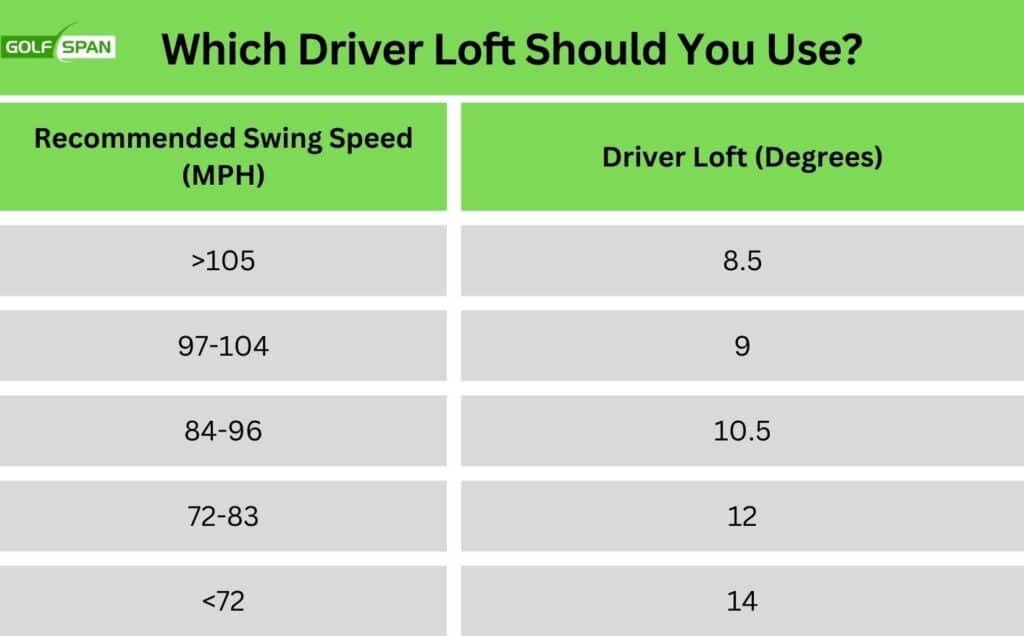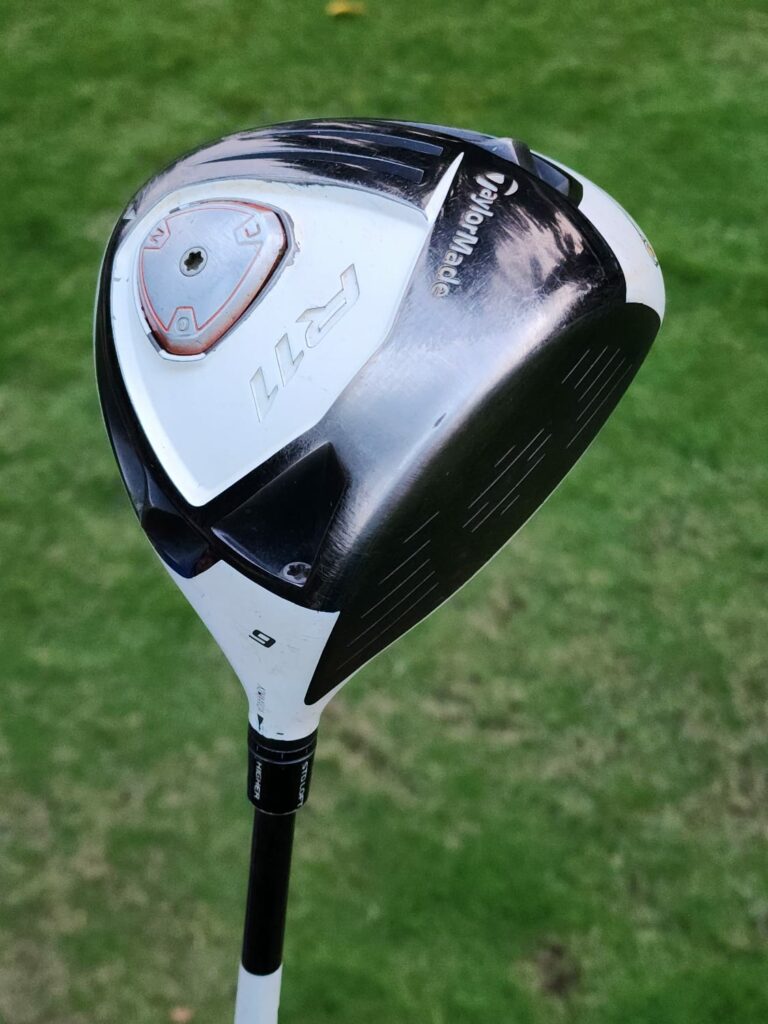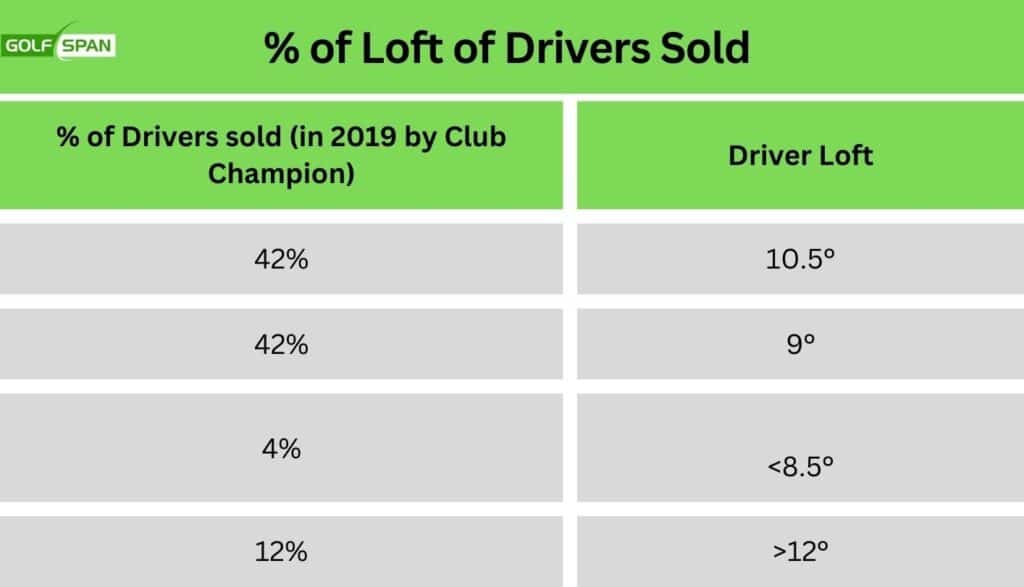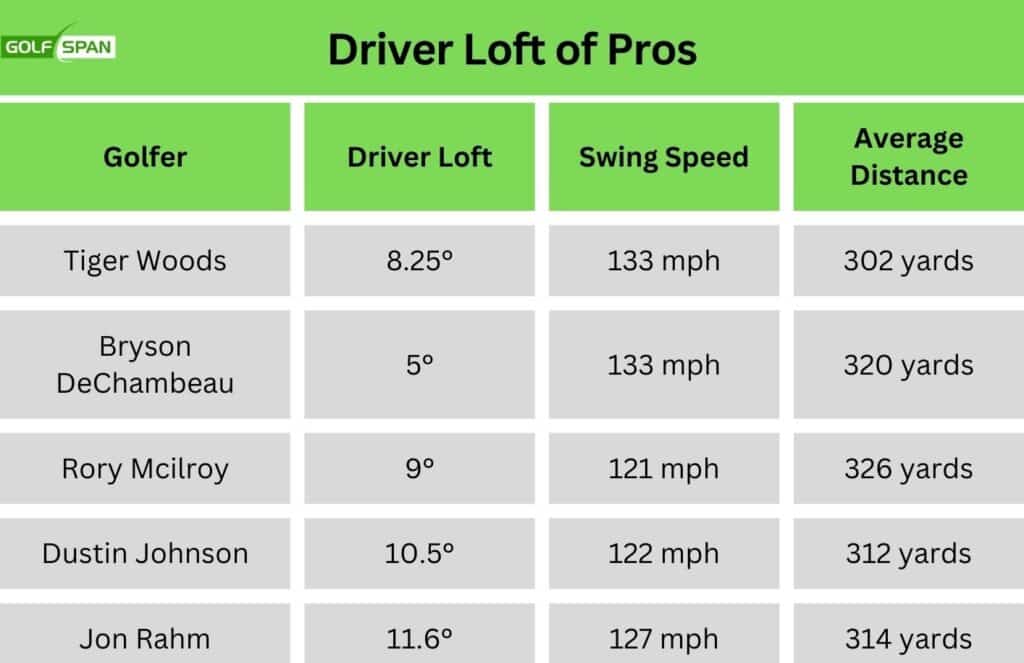A 10.5° golf driver loft is ideal for beginners and most golfers. If you’re new to golf or have a slower swing speed, a driver with a higher loft will suit you better. A higher loft driver is more forgiving since getting an upward attack angle is easier.
Less loft allows you to gain more distance and less spin. Generally, the faster your swing speed, the less lofted driver you need.
I see many golfers play with the wrong driver loft, which hurts your drives. The lofts in drivers usually range from 8° to 14°.
To help you visualize, I’ve also made a driver loft chart. If you read this article carefully, you’ll understand which driver loft you’ll need as your game evolves.

Note: You can estimate which driver loft will suit you and your swing speed, but finding the best one for every golfer will be different. That is why I always recommend getting your clubs fitted. Check out Brendon’s full club fitting experience at the PGA Tour Superstore.
What Driver Loft Should High Handicappers Use?

A driver with a 10.5-degree loft is ideal for high handicappers and beginners. This is why most beginner drivers and forgiving drivers have a high loft of 10.5° or above.
A higher loft driver provides more forgiveness and a higher ball flight but has more spin and less distance than a lower loft driver. Since high handicappers need to focus on hitting more fairways off the tee than getting the maximum distance, a 10.5 driver suits better.
Higher-lofted clubs are also easier to hit. This is why a 9-iron is easier than hitting a 4-iron, but it doesn’t go as far. I won’t explain each golf club’s loft since this article is focused purely on the driver’s loft.
If you’re struggling with your drives and think your driver loft is to blame, using the correct driver loft for your swing can improve your output. In most cases, you won’t need a new driver shaft either.
If you’re a high handicapper, I suggest you use a higher loft driver than the one you currently use.
You have three options if your driver loft remains too high for your swing.
- Find a driver with an adjustable hosel that lets you weaken the clubface’s loft angle in moderation.
- Consider the costly approach of customization.
- Think about a strong lofted 3-wood with 13 to 13.5 degrees of loft.
Most golfers use a 9° or a 10.5° driver, but you can also experiment with a 12-degree driver.

What Driver Loft Should Low Handicappers Use?
A 9-degree driver loft is most suited and commonly used by professional golfers and low handicappers.
As your golf game improves and your swing evolves (or gets faster), you must reconsider your driver loft. Low-handicap golfers want to maximize their driving distance and reduce spin.
These players are best positioned to swing a 9-degree driver for low spin, controlled ball flight, and maximum roll.
On the other hand, if you have a fast swing speed (above 100 mph) and you’re using a high-lofted driver, you might have an open-face contact, which results in a slice.
I had the same problem, and going from a 10.5 to a 9.5 driver made a difference (along with spending hours at the driving range).
It’s important to remember that a lower loft driver won’t always be better for fast swing speeds, and there’s no one best driver loft for distance. While golfers like Bryson DeChambeau stand out for having a 5-degree lofted driver, many PGA tour players also play with a 10.5-degree driver.
I’ve created this table showing the statistics of some professional golfers. This table highlights that loft isn’t the only factor when maximizing distance.

Lower Lofted vs High Lofted Drivers
9.5° or less loft is considered to be a low lofted driver. Anything above 10° loft is in the category of high-lofted drivers.
Higher lofted drivers aid most amateurs since they can improve their launch, accuracy, and spin off the tee.
If your driver loft is too low for your clubhead speed, you will produce inadequate carry, distance, and erratic dispersion.
Swinging a lower lofted driver can cause you to slice your golf shots and spend every hole in the right rough. Conversely, higher lofted drivers carry a draw bias, provoking snap hooks.
But, with faster swing speeds and high lofts, the open clubface causes you to generate increased spin, causing your ball to fly higher and follow an aggressive descent to land softly. As a result, it eradicates roll, hampering your total yardage potential.
Who Should Use a High Lofted Driver?
Generally, a high-lofted driver is best suited for:
- New golfers
- High handicappers
- Golfers with slow swing speeds
- Golfers who can’t hit the ball upwards
- Senior golfers
Who Should Use a Low Lofted Driver?
Low-lofted drivers are usually preferred by:
- Golfers with a fast swing speed
- Low handicappers who want more carry distance
- Golfers who struggle with too much spin.
- Golfers that have a higher launch angle than desired
FAQ
Is A Higher Loft Driver Better?
Yes, in my experience, a higher lofted driver is better for most amateur golfers, as it is easier to consistently launch your golf ball from the tee. However, a higher loft driver can cause faster swingers to generate excess spin and a ballooned shot for a loss of roll and total distance.
What Loft Should I Use For My Driver?
Golfers with higher swing speeds should use a 9-degree driver or less. Conversely, golfers with moderate swing speeds are advised to play with a 10.5-degree driver. Finally, slow swing speeds are best equipped to strike a 12-degree or weaker driver.
Does Lowering Driver Loft Open The Face?
Yes, lowering the driver loft opens the club face angle, as shown by Mobile Clubmaker Golf in this Youtube video. You’ll notice that as he strengthens the loft, the clubface opens. Conversely, when he weakens the loft, it closes the angle of the clubface, creating a draw bias setup.
Matt has played golf since he was 4 years old and has written over 150 articles at GolfSpan since 2021. Matt specializes in product reviews using his postgraduate degree in Sports Marketing from Johan Cruyff Institute. Matt has a handicap index of 10.8 and currently plays weekly at Pilar Golf Course near his home in Buenos Aires, Argentina. He also loves his Callaway Odyssey Exo Rossie putter and likes a pepper steak pie with curry gravy at the turn. You can connect with him on LinkedIn.







